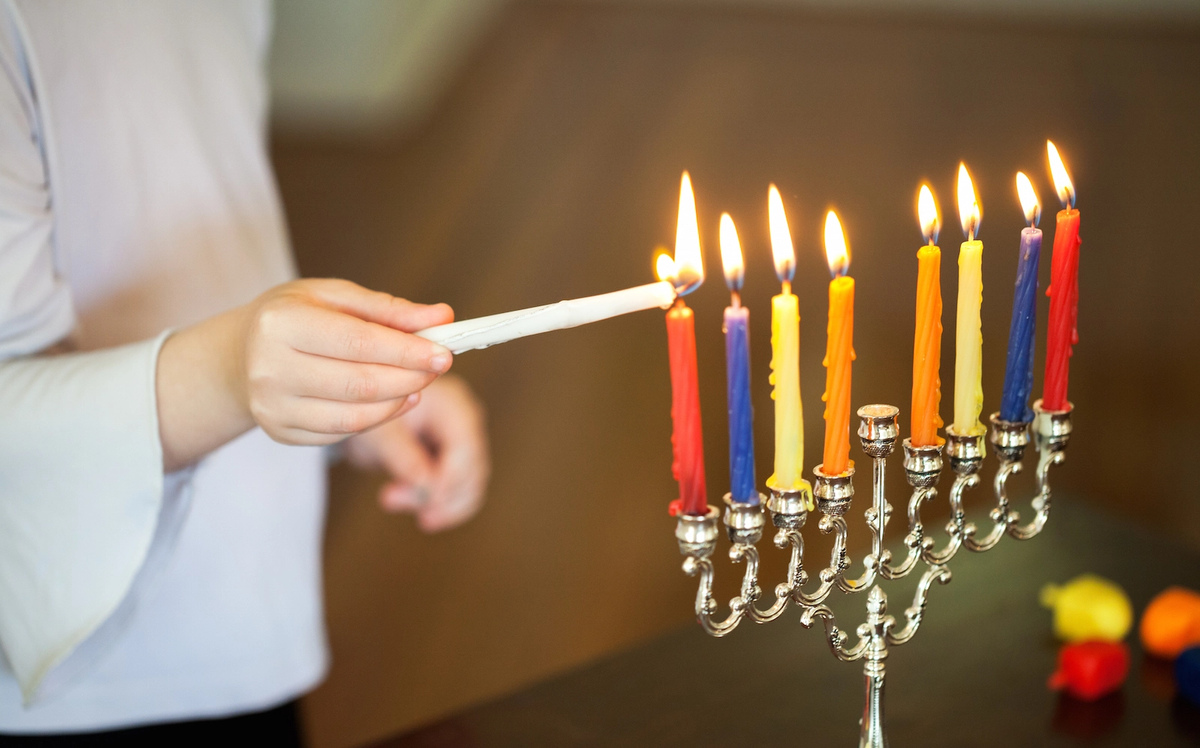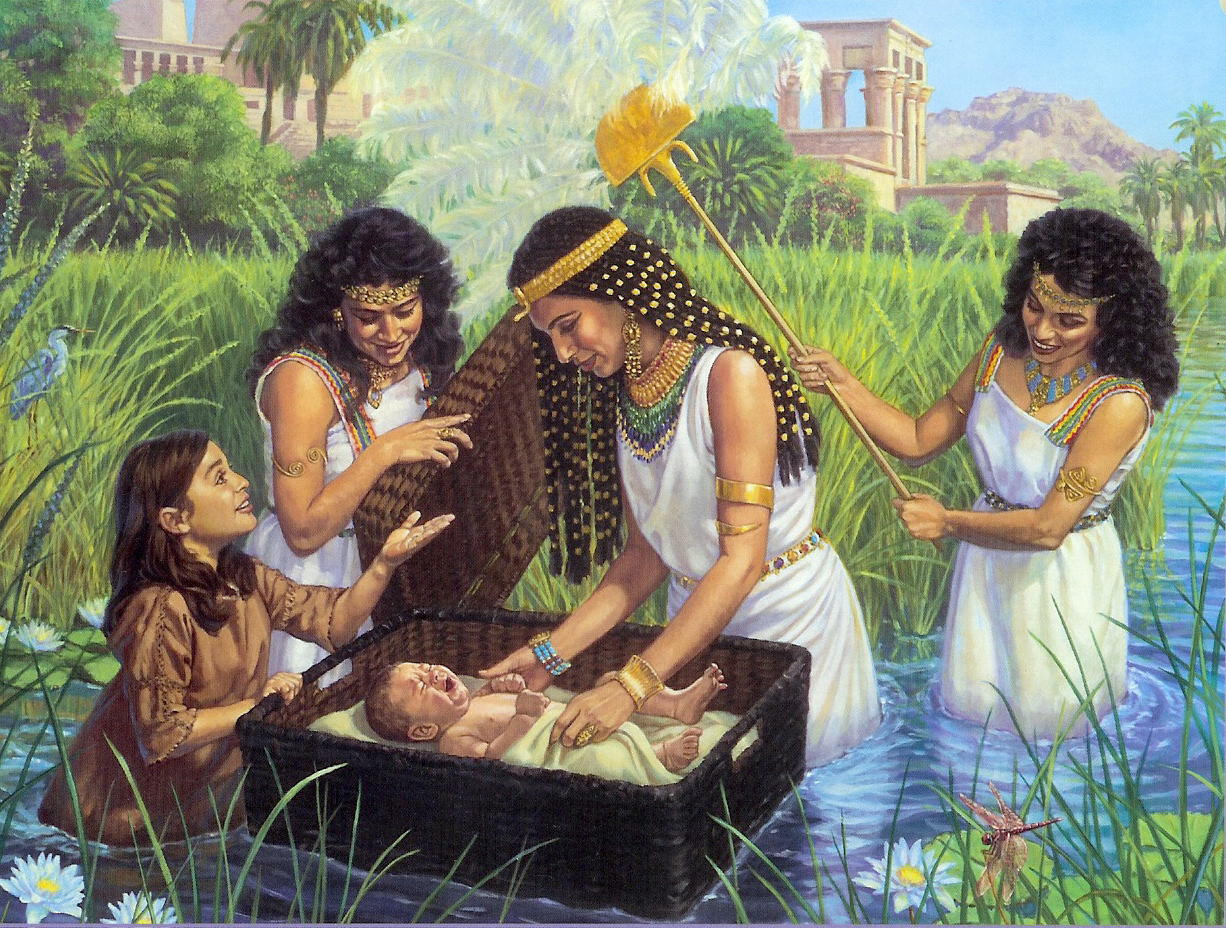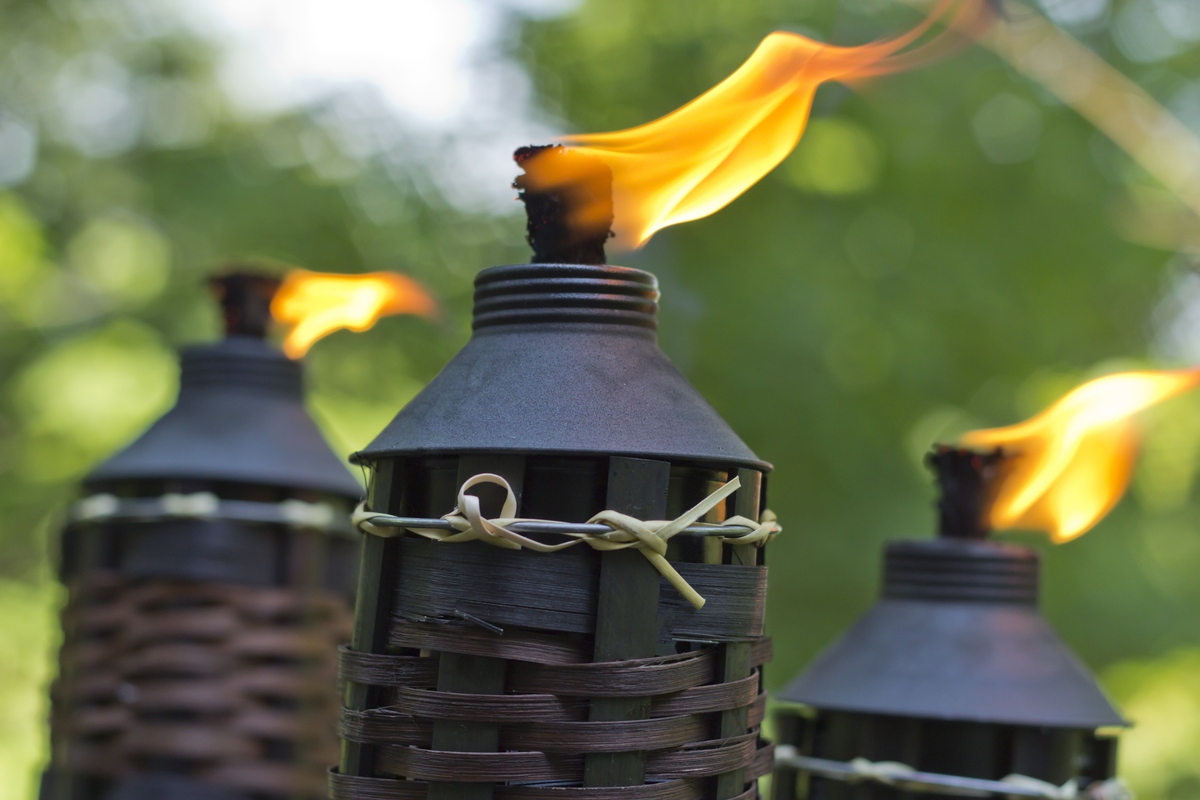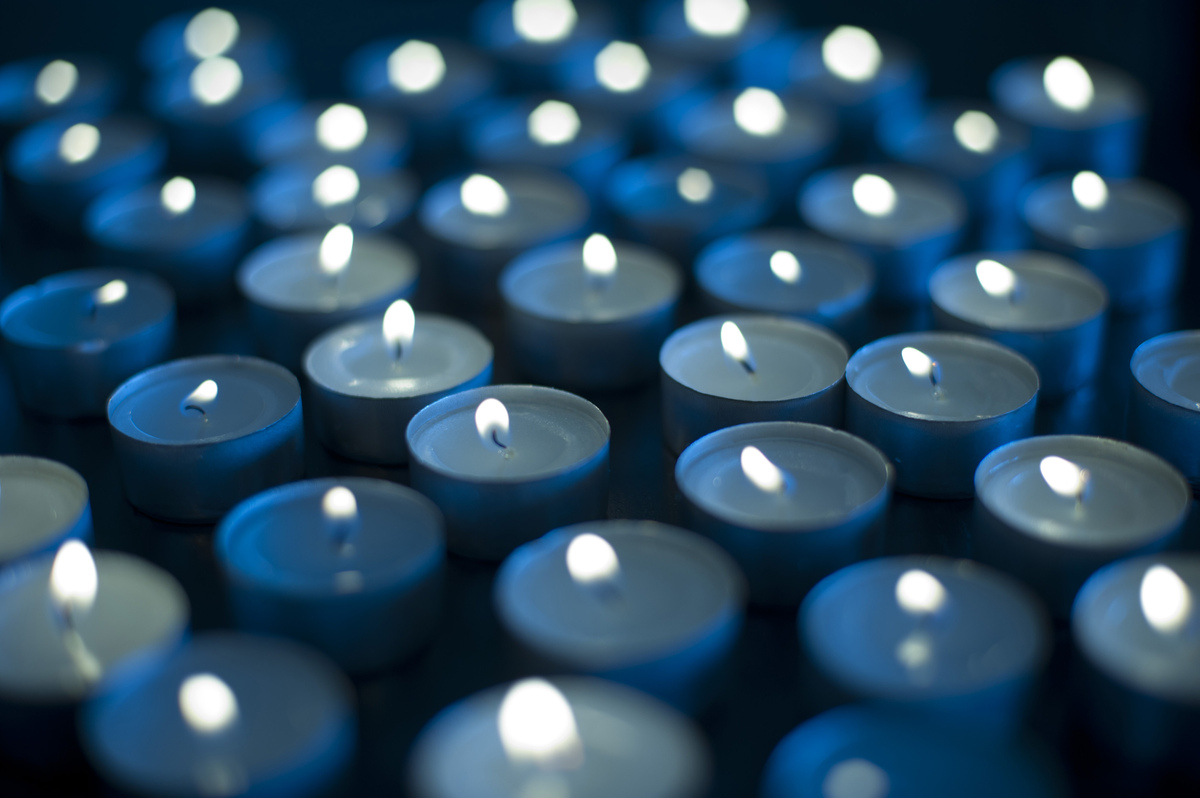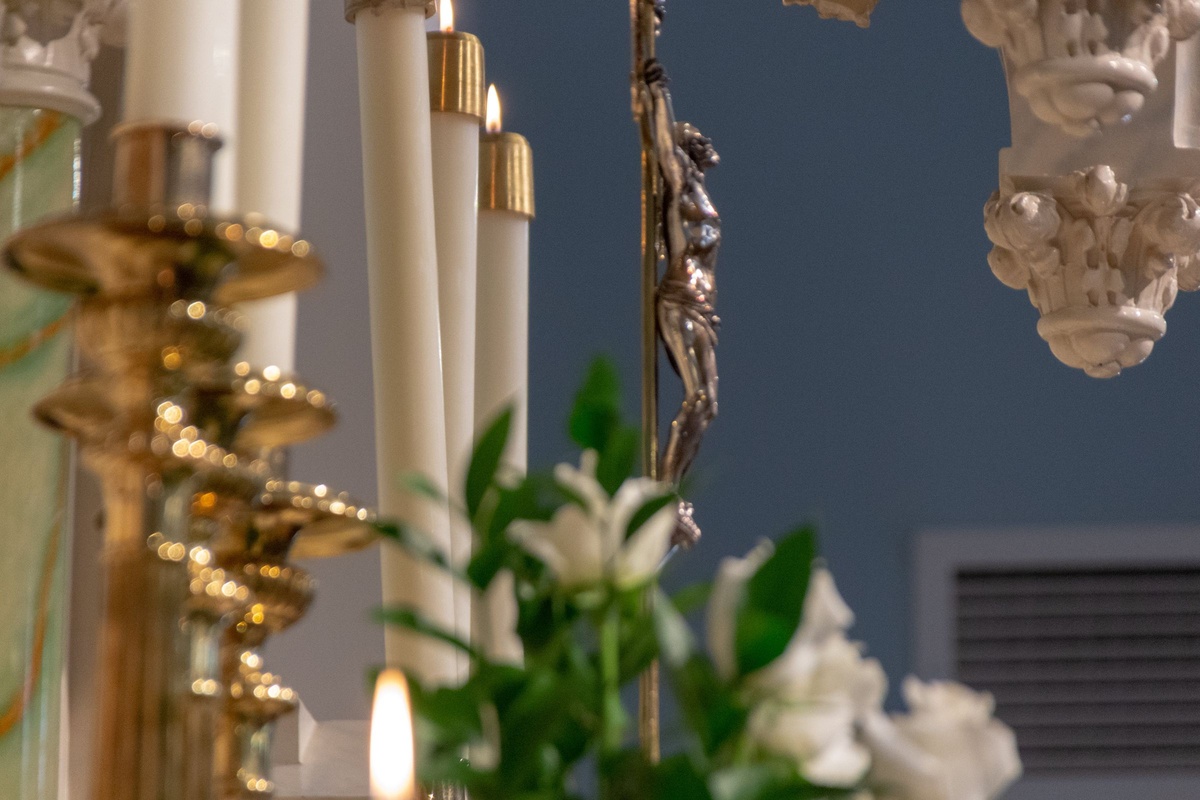

Articles
What Do Altar Candles Symbolize
Modified: January 9, 2024
Discover the symbolism behind altar candles in this enlightening articles - explore their significance and role in religious ceremonies.
(Many of the links in this article redirect to a specific reviewed product. Your purchase of these products through affiliate links helps to generate commission for Storables.com, at no extra cost. Learn more)
Introduction
Altar candles have been an integral part of religious and spiritual practices for centuries. These candles hold great significance and symbolism in various religious traditions, including Christianity, Judaism, and Buddhism. Whether flickering in a dimly lit cathedral or illuminating a serene meditation space, altar candles create an ambiance of solemnity, reverence, and spiritual connection.
Throughout history, humans have been drawn to the radiance and warmth of fire. The allure of candles lies not only in their practical purpose of providing light, but also in the deeper symbolism they represent. In the context of religious ceremonies and rituals, altar candles hold a profound spiritual meaning that goes beyond their physical attributes.
This article will delve into the history, religious significance, representation of light, symbolism of colors, role in Catholic Mass, symbolism in other religions, and their use in personal devotion and prayer.
Key Takeaways:
- Altar candles symbolize divine presence, enlightenment, and spiritual guidance across various religions, creating an ambiance of solemnity, reverence, and spiritual connection.
- The colors of altar candles convey specific emotions and intentions, enhancing the spiritual experience and fostering a deeper connection with the divine in religious ceremonies and personal devotion.
Read more: What Do Candles Symbolize
History of Altar Candles
The use of candles in religious ceremonies dates back thousands of years. The ancient Egyptians were among the earliest civilizations known to have utilized candles in their religious rituals. They believed that the burning flame represented the eternal presence of their deities.
In ancient Rome, candles played a crucial role in various religious ceremonies, including those of the cult of Mithras. Roman Catholics later adopted the use of candles in their masses and other liturgical services.
During the Middle Ages, the Church grew to recognize candles as a symbol of light and purity. Altar candles gained prominence and became an integral part of Catholic liturgy. The candles were typically made of beeswax, which was prized for its purity and symbolized the sinless nature of Christ.
Over time, the size and design of altar candles evolved. Larger candles, known as pillar candles, were used during important ceremonies, while smaller ones were employed for personal devotion and prayer. Intricate candle holders and ornate candelabras also became common, enhancing the visual spectacle of religious ceremonies.
With the advent of electricity, the use of candles in religious services declined. However, many religious institutions still uphold the tradition of using candles, cherishing their historical and spiritual significance.
Today, altar candles continue to be an essential element of religious practices, serving as a timeless link to ancient traditions and connecting believers with their spirituality.
Religious Significance
Altar candles hold deep religious significance in various faith traditions. They are often regarded as a symbol of divine presence, enlightenment, and spiritual guidance.
In Christianity, candles are a powerful representation of Christ, who proclaimed himself as the light of the world. They are lit to honor and symbolize the presence of Christ in the Eucharist and to create a sacred atmosphere during Mass.
In Judaism, candles are an integral part of religious ceremonies, such as Hanukkah and Shabbat. The lighting of the menorah during Hanukkah represents the miracle of the oil in the temple, where the small amount of oil lasted for eight days. Shabbat candles are lit by Jewish families to welcome the Sabbath and invoke a sense of sanctity and peace.
In Buddhism, candles are used in meditation practices to symbolize the illumination of wisdom and the dispelling of ignorance. The flickering flame represents the transient nature of existence and encourages practitioners to cultivate mindfulness and awareness.
Across various other religions, candles also play a significant role. In Hinduism, diyas (oil lamps) are lit during festivals and rituals to symbolize the victory of light over darkness and the triumph of good over evil. In Sikhism, candles or oil lamps are used to illuminate the Guru Granth Sahib, the holy scripture.
The act of lighting candles in religious settings serves as a form of devotion and prayer. It is believed to create a sacred space and establish a connection between the earthly realm and the divine. The warm glow of the candle is seen as a source of comfort, inspiration, and spiritual solace.
Overall, the religious significance of altar candles is deeply rooted in the spiritual beliefs and practices of different faiths, symbolizing the presence of the divine and inviting believers to experience a sense of transcendence and reverence.
Representation of Light
Altar candles serve as a powerful representation of light in religious and spiritual contexts. Light has long held symbolic significance across cultures and religions, representing fundamental concepts such as illumination, purity, enlightenment, and divine presence.
In religious rituals, the candle’s flame is seen as a tangible manifestation of divine light. It carries a profound spiritual symbolism, reminding believers of the spiritual guidance and wisdom provided by a higher power.
Light is often associated with knowledge and insight. Just as a candle illuminates a dark room, spiritual light is believed to bring clarity, understanding, and enlightenment to the human soul. It serves as a metaphor for seeking truth, finding meaning, and embarking on a spiritual journey.
Light is also symbolic of purity and holiness. A lit candle represents the untainted nature of the divine and the ideals of righteousness and goodness. It evokes a sense of sacredness and invokes a state of reverence and awe.
In the context of religious ceremonies, the presence of light creates a sacred atmosphere, enhancing the overall spiritual experience. The gentle flicker of the flame captivates the senses, engaging both the visual and emotional aspects of worship.
Additionally, light is closely associated with life and vitality. It symbolizes the vitality of the human spirit and the presence of a divine life force. The warmth and radiance emitted by the candle flame evoke feelings of comfort, hope, and divine love.
Furthermore, the act of lighting a candle is often viewed as an act of devotion and prayer. It signifies offering one’s intentions, hopes, and desires to a higher power. The act of physically lighting a candle can also be a meditative practice, focusing one’s thoughts and intentions whilst creating a quiet and introspective environment.
Overall, the representation of light through altar candles serves as a multi-faceted symbol, encompassing themes such as knowledge, purity, reverence, life, and divine connection. It invites individuals to embrace the transformative power of light and embark on a deeper spiritual journey.
Symbolism of Colors
In addition to the spiritual significance of light, the colors of altar candles also hold symbolic meaning within different religious traditions. The choice of candle color can convey specific emotions, intentions, and messages, further enhancing the spiritual experience.
In Christianity, the most common candle colors are white, red, purple, and green. White candles symbolize purity, innocence, and the divinity of Christ. They are often used during major liturgical celebrations and sacraments. Red candles represent the blood of Christ and his sacrifice, emphasizing themes of love, courage, and redemption. Purple candles are commonly used during Advent and Lent, symbolizing penance, preparation, and reflection. Green candles are associated with the seasons of Ordinary Time, representing hope, growth, and renewal.
In Judaism, candles used during important holidays and ceremonies often follow a specific color scheme. For instance, the Hanukkah menorah typically includes blue and white candles, signifying the colors found on the Israeli flag and representing the importance of national identity and sovereignty. During Shabbat, candles are generally white, symbolizing purity and the light of the Sabbath.
In Hinduism, candles and diyas come in a variety of colors. Each color holds its own symbolism and is chosen based on the specific purpose or deity being honored. For example, red signifies passion and fertility, while yellow represents knowledge and learning. Green is associated with prosperity and abundance, while blue represents the divine and spiritual growth.
Color symbolism varies across different cultures and religions. For example, in some indigenous cultures, yellow candles symbolize the sun and life force, while black candles are associated with protection and warding off negative energies.
It is important to note that color symbolism can also be subjective and open to interpretation. The cultural and personal associations with certain colors may vary from one individual to another. Therefore, understanding the specific cultural and religious context is crucial in interpreting the symbolism of candle colors.
Whether through traditional symbolism or personal associations, the colors of altar candles provide an additional layer of symbolism and meaning, heightening the spiritual experience and fostering a deeper connection with the divine.
Altar candles symbolize the presence of the divine, spiritual illumination, and the offering of prayers. They are often used to create a sacred space for meditation and ritual.
Read more: What Do White Candles Symbolize
Role in Catholic Mass
In the Catholic Church, altar candles occupy a prominent role during the celebration of Mass. They serve both practical and symbolic purposes, enriching the liturgical experience for the faithful.
Practically, candles provide essential lighting, especially in churches with dimly lit interiors or during evening Masses. Their warm glow creates an atmosphere of reverence and beauty, allowing the faithful to focus their attention on the sacred rituals.
Symbolically, altar candles represent the presence of Christ, who is regarded as the Light of the World. They serve as a visual reminder of Christ’s teachings and the divine presence in the Eucharist. The candles are usually positioned on or near the altar, symbolizing the light and warmth of Christ’s love radiating throughout the congregation.
During Mass, the candles play a prominent role in specific parts of the liturgical celebration. The lighting of the candles at the beginning of Mass signifies the start of the sacred gathering and invokes the presence of Christ. It is a moment of preparation and spiritual readiness.
Altar candles are also used during the Gospel reading, signifying the illumination of the Word of God. The candles are often flanked by acolytes or servers, emphasizing their role as bearers of Christ’s light and messengers of His word to the congregation.
Additionally, during the consecration of the Eucharist, the candles play a vital role in creating a sacred and reverent space. They symbolize the presence of Christ’s body and blood, becoming a focal point of devotion and adoration for the faithful.
The extinguishing of the candles at the end of Mass holds its own symbolic significance. It represents the temporary departure of Christ’s tangible presence but serves as a reminder that His light continues to shine within the hearts of believers as they go forth into the world.
Overall, the role of altar candles in the Catholic Mass extends beyond their practical function of providing illumination. They embody the spiritual presence of Christ and serve as a visual representation of His teachings, guiding believers in their worship and fostering a deeper connection with the divine.
Symbolism in Other Religions
While altar candles hold significant symbolism in Christianity, they also play important roles and carry diverse meanings in other religious traditions.
In Hinduism, the use of candles or oil lamps, known as diyas, is prevalent in various religious rituals and festivals. These illuminated lamps represent the triumph of light over darkness and the presence of divine energy. The flickering flame is believed to symbolize the continuous journey of the soul and the eternal light of the divine presence.
In Buddhism, candles are often used as a visual aid during meditation practices. They represent the illumination of wisdom and the dispelling of ignorance. The flame’s constant movement reminds practitioners of the impermanence of life and the need to let go of attachments.
In Judaism, candles hold significant importance in ceremonies such as Hanukkah and Shabbat. During Hanukkah, a menorah is lit to commemorate the miracle of the oil in the temple. The candles symbolize the victory of light over darkness and the importance of preserving faith. On Shabbat, Jewish families light two candles to welcome and honor the Sabbath, creating a sacred and peaceful atmosphere.
In Sikhism, candles or oil lamps are used to illuminate the Guru Granth Sahib, the holy scripture of the Sikhs. The light symbolizes the divine wisdom contained within the scripture and serves as a reminder of the guidance and teachings of the Sikh Gurus.
Throughout indigenous and nature-based spiritual practices, candles hold their own symbolic meaning. They are often used in ceremonies to honor ancestors, provide spiritual protection, or create a sacred space. The flickering flame is seen as a representation of the spirit world and a conduit for communication between the physical realm and the divine.
The symbolism of candles in various religions is a testament to the universality of light as a powerful symbol of divinity, enlightenment, and spiritual connection. While the specific rituals and meanings may vary, the use of candles as a source of illumination and a representation of the sacred is a shared practice that resonates across different faith traditions.
Personal Devotion and Prayer
Altar candles also hold great significance in personal devotion and prayer. Many individuals incorporate candles into their personal spiritual practices as a way to enhance their connection with the divine and create a sacred space for contemplation and prayer.
The act of lighting a candle can be a meditative practice in itself. As the flame flickers, individuals can use this moment to center themselves, clear their minds, and focus their intentions. Lighting a candle can serve as a physical representation of their inner state, symbolizing the desire to bring light, hope, and positivity into their personal lives and the lives of others.
For some, lighting a candle can also be a tangible way to offer prayers and intentions. The warm glow of the candle becomes a visual representation of their prayers and acts as a conduit for their heartfelt desires to reach the divine. It serves as a tangible reminder of their spiritual connection and provides a focal point for focused devotion.
The choice of candle color can also hold personal significance. Specific colors may be chosen to align with the individual’s intentions or the symbolism associated with a specific deity or spiritual practice. For example, someone seeking healing and wellness may choose a green candle, while someone seeking guidance and clarity may choose a white candle.
Moreover, the presence of a lit candle in a personal prayer space or altar can create a serene and sacred environment. The gentle, warm light emanating from the flame can evoke a sense of tranquility and reverence. It serves as a visual reminder of the divine presence and can help individuals find solace and peace during times of personal reflection and spiritual connection.
Whether used in formal religious practices or for personal devotion and prayer, altar candles hold a profound significance. They provide a tangible way for individuals to express their spirituality, deepen their connection with the divine, and find solace and guidance in their personal journey of faith.
Conclusion
Altar candles have a rich history and carry deep symbolism in various religious traditions. From their practical function of providing light to their profound spiritual significance, these candles create an ambiance of solemnity, reverence, and spiritual connection.
Throughout history, candles have served as a symbol of divine presence, enlightenment, and spiritual guidance. They represent the eternal presence of the divine and illuminate the path towards spiritual awakening and truth.
The colors of altar candles also hold symbolic meaning, conveying specific emotions, intentions, and messages. Whether in Christianity, Judaism, Hinduism, or other faiths, the choice of candle color adds depth to the spiritual experience and enhances the symbolism associated with different religious ceremonies.
In the Catholic Mass, altar candles play a prominent role, symbolizing the presence of Christ and creating a sacred atmosphere. They serve as a visual reminder of Christ’s teachings and guide the faithful in their worship and devotion.
Altar candles also hold significance in other religions, representing the triumph of light over darkness, the illumination of wisdom, and the presence of the divine. They provide a focal point for personal devotion and prayer, serving as a tangible connection with the divine and a source of solace and guidance.
In conclusion, altar candles carry a timeless and universal symbolism that goes beyond religious boundaries. They serve as a beacon of light, guiding individuals in their spiritual journey, fostering a sense of reverence, and inviting a deeper connection with the divine presence.
Whether in a grand cathedral, a humble prayer corner, or a serene meditation space, the warm glow of altar candles continues to inspire and uplift the hearts and spirits of believers around the world.
Frequently Asked Questions about What Do Altar Candles Symbolize
Was this page helpful?
At Storables.com, we guarantee accurate and reliable information. Our content, validated by Expert Board Contributors, is crafted following stringent Editorial Policies. We're committed to providing you with well-researched, expert-backed insights for all your informational needs.

